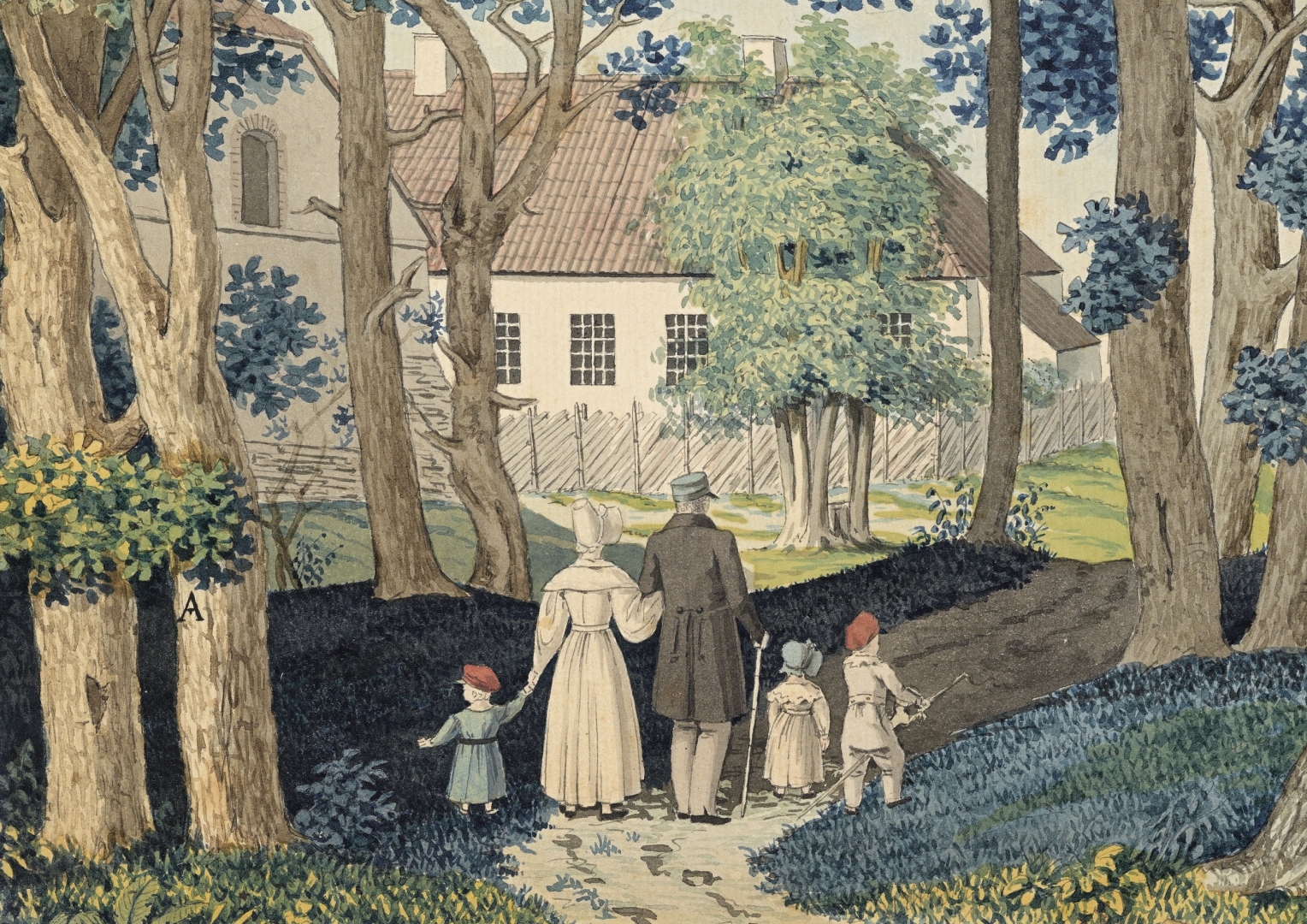Six Kügelgens have left their marks on Estonian art history, and their works reflect a range of styles, from classicism to symbolism. Following in the footsteps of the founders of the local branch of the family, i.e. the portraitist and history painter Gerhard (1772–1820) and the landscape painter Carl (1772–1832), their sons Wilhelm (1802–1867) and Constantin (1810–1880) and grandchildren Sally (1860–1928) and Erich (1870–1945) also became artists.
The Kügelgen family also produced other noteworthy individuals. In Germany, the anthroposophic pedagogue Helmut von Kügelgen (1916–1998), who extensively developed Waldorf education, and the doctor Constantin Franz (Kai) von Kügelgen (1880–1926), who researched vitamin deficiency, became famous. In Tallinn, the psychiatrist Ernst von Kügelgen (1871–1948) was the head of the Seewald mental asylum, where Leo von Kügelgen (1880–1931), who was a doctor and supporter of the painter Paul Burman, also worked.
The Kügelgens were no strangers to the literary arts either. For example, Constantin Franz (Kai) wrote poems and Bernt von Kügelgen was known as a “socialist” writer. We should also mention Paul von Kügelgen (1843–1904), who was the editor-in-chief of one of the most influential German-language newspapers published in Russia, the St. Petersburger Zeitung, and his successor and son Siegwart (1875–1952). The most renowned writer, however, was the artist Wilhelm von Kügelgen (1802‒1867), whose collection of memoirs An Old Man’s Reminiscences of His Youth offers a lively overview of intellectual and private life during the early Romantic period. This book became so popular among the bourgeoisie that before World War II every decent German home had to have a copy.
Therefore, the various aspects of Baltic German culture from the beginning of the 19th century until the 1980s is reflected by the stories of not only the Kügelgen artists, but of the whole family.




